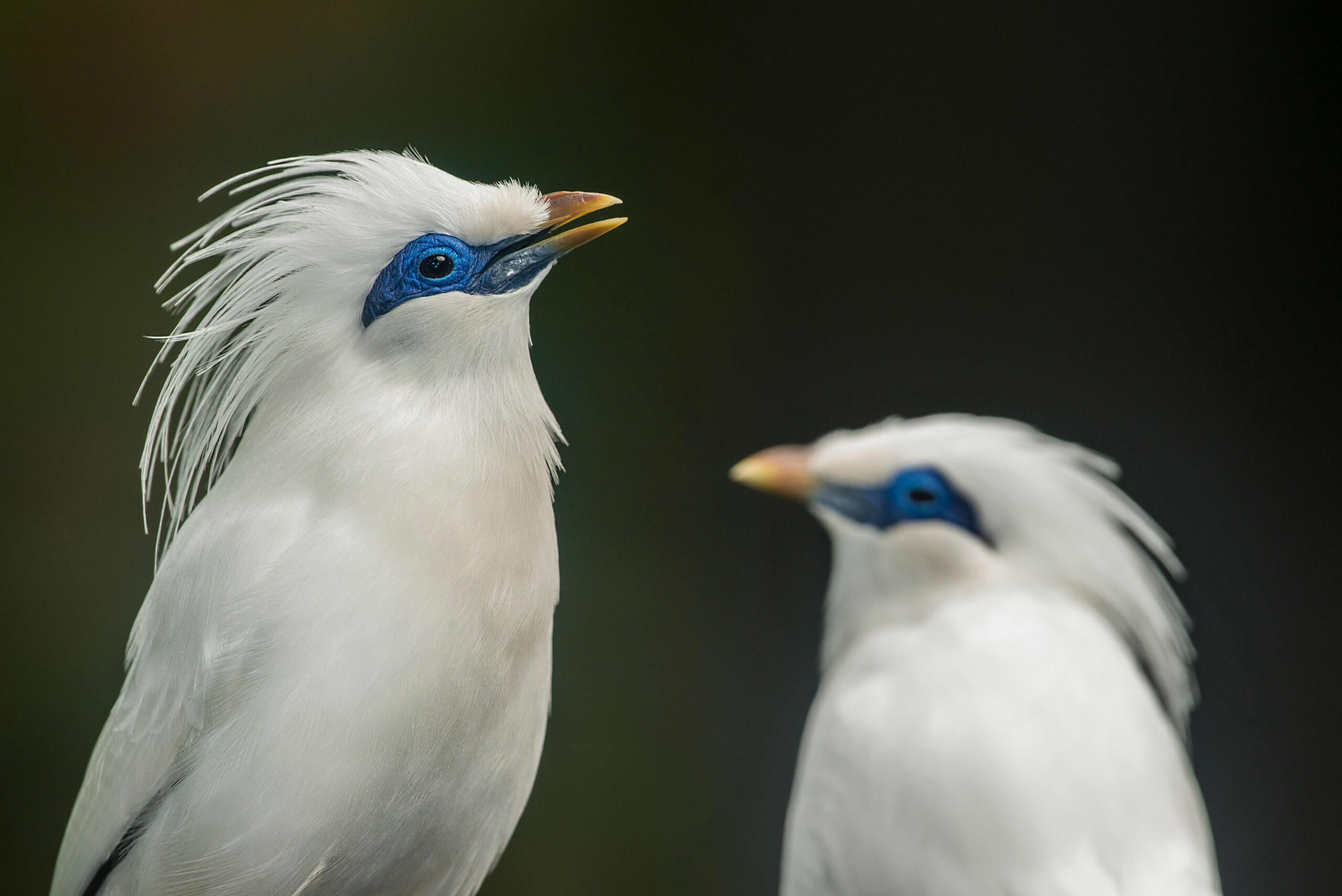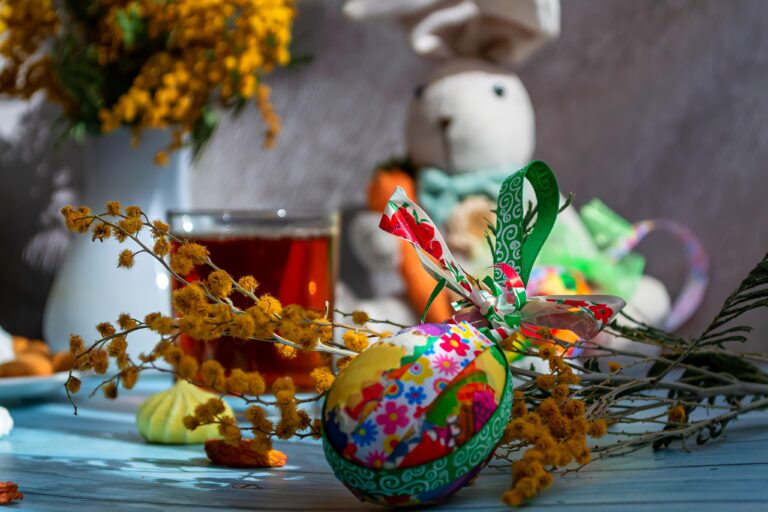The Bali Starling which is also known as Bali Myna, Bali Mynah, and Rothschild’s Mynah is the most famous bird in Bail.
It’s a striking sight with an almost pure white body, a drooping white crest, blue bare skin around the eyes, black wing tips and a black-tipped tail.
Sadly, it’s a critically endangered species and it’s thought that fewer than 50 starlings can now be found in the wild.
Our guide to the Bali starling will explain what’s being done to help breed Bali starlings and ensure that this threatened species survives for future generations to enjoy. We’ll also share where you can see these birds in the wild today.
About The Bali Starling
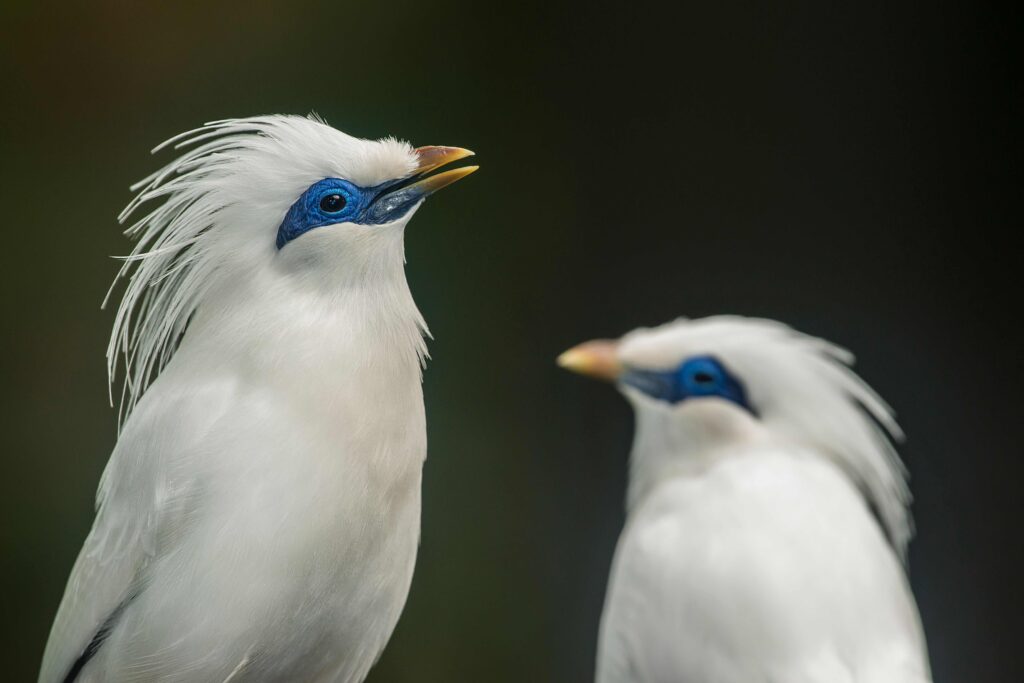
The Bali Starling, Latin name Leucopsar rothschildi, is called the Jalak Bali by the Balinese people and it was first written of, in scientific literature, in 1912.
The German ornithologist, Erwin Stresemann, didn’t actually visit Bali, but was presented with a specimen that had been collected here.
The Taxonomy Of These Endangered Birds
Stresemann decided that this was a new family of birds and he coined the name of the genus “Leucopsar” as well as the binomial name for the starlings, Leucopsar rothschildi.
Leucopsar comes from the Greek. “Leukos” which is the Greek word for white and “psar” which is the Greek for “starling”.
The name “rothschildi” was a tribute to a fellow naturalist, Walter Rothschild, who had given Streseman access to his collection in his personal museum in the market town of Tring in England.
The Systematics Of These Rare Birds
Incredibly, the Bali Starling remains the only species to be in the “Leucopsar” genus to this day. Its nearest relatives appear to be starlings from the Sturnia genus and possibly also the Brahminy starling which originates in India.
This is further complicated by the fact that the Brahminy Starling was considered to belong to the Sturnia genus until it was moved based on a genetic study, in 2008.
What Does A Bali Starling Look Like?

The Jalak Bali is about 25 centimetres long (roughly 10 inches) when it’s fully grown. You will find that the body is almost completely white and that it has a crest over the head which is long and droopy.
The bill is yellow and there is blue, bare skin around the eyes and also on its legs. The wing tips and the tail tip are black.
The two sexes of Bali starlings are nearly indistinguishable, but a careful examination will show that the males have a longer crest than the females do.
Where Do They Live In The Wild?
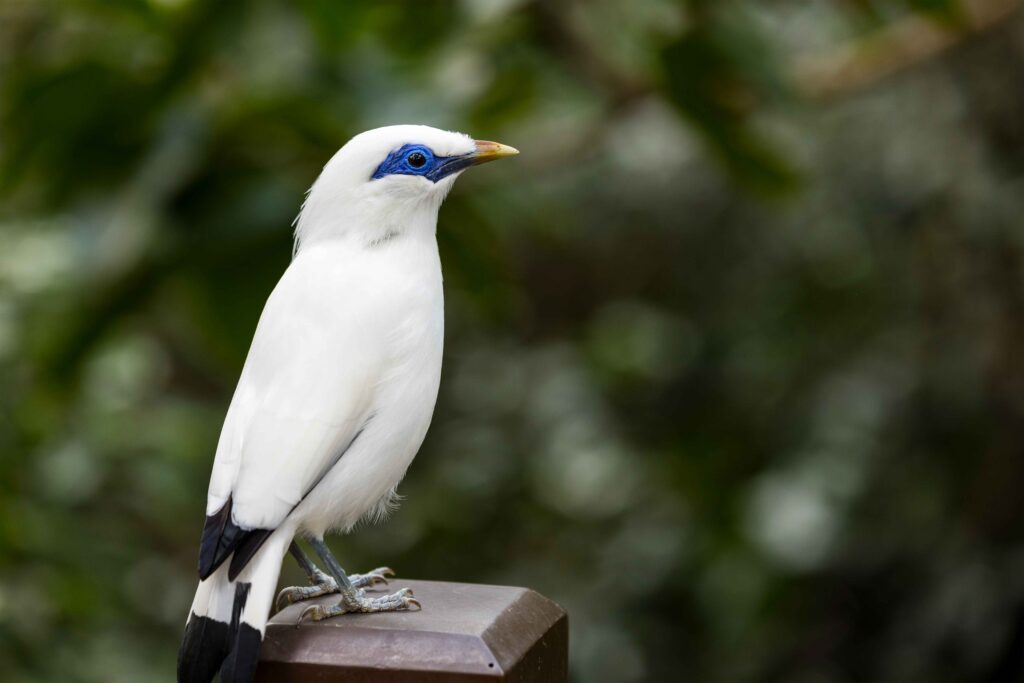
You can only find a Bali starling bird nest in Bali, Indonesia. No member of this species has been found anywhere else in the world and it’s the only endemic species of vertebrate known in Bali.
Interestingly, the bird was designated the official animal emblem of Bali in 1991 and it also features on the 200 Rupiah coin.
The Behaviour Of These Beautiful Birds
The Bali myna is not a precocious creature. It tends to hide out in the tree tops and while most starlings spend time on the ground, this one only comes down for water or to find nesting material before the breeding season begins.
Given that the bird is bright white, this is probably an adaption to ensure that it remains hidden from predators including other local birds.
Young starlings will gather together in groups to find food. It’s also a very vocal bird with a wide collection of calls and a distinct “tweet”.
The Worrying Status Of The Bali Starling
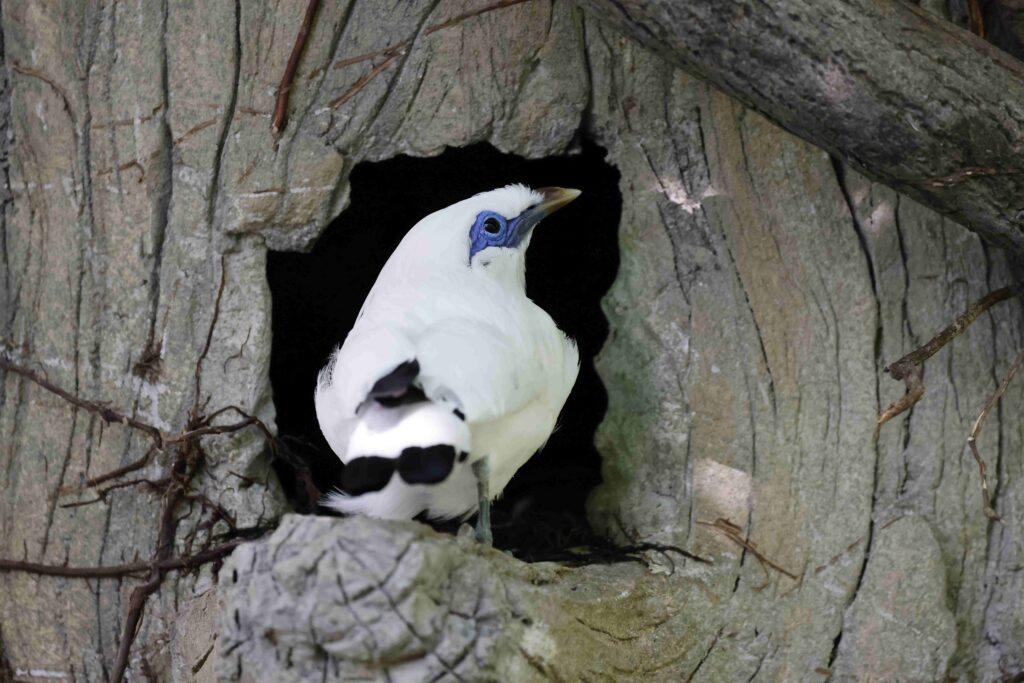
The wild population of these birds has been on the brink of extinction since the early 1990s. By 2020, it was thought that of all the birds, only 50 Bali mynas still survived in the wild.
They are protected wildlife and are among several endangered birds protected by law against the illegal wildlife trade in Indonesia.
In particular, the National Parks Foundation has worked hard to see captive birds released into the wild and they then try to protect birds using help from the local community.
The Bali Starling Breeding Program: Captive Breeding Programs In Bali
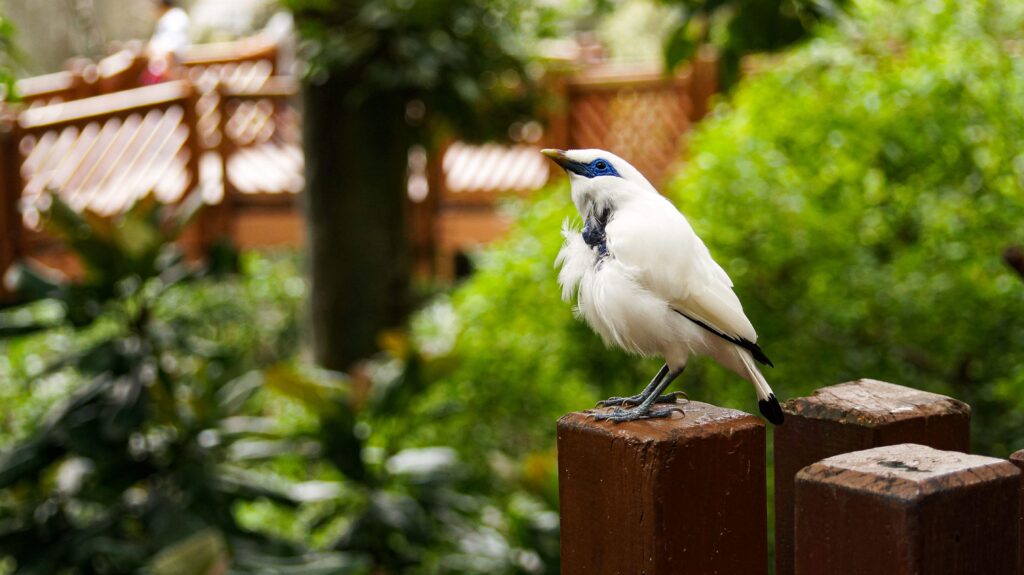
There are only three places where the Bali starling can be found in the wild today. And this is thanks to a conservation program inspired by the European Endangered Species program.
These are the Taman Safari Bali which is the Safari and Marine Park, West Bali National Park (the island’s only national park) and Nusa Penida.
Taman Safari Bali
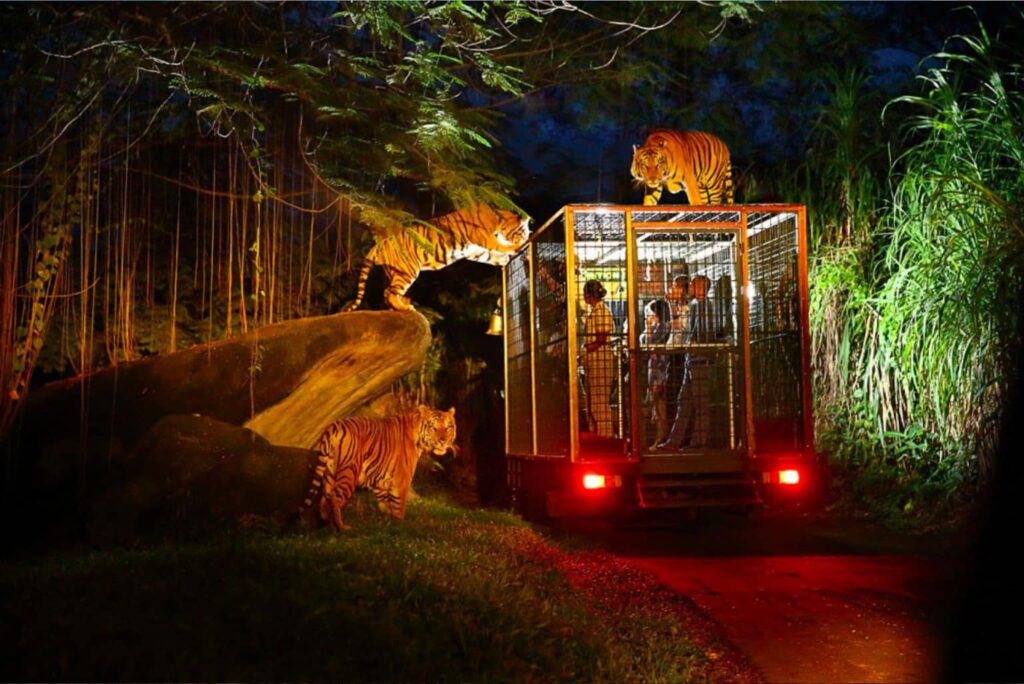
The Safari Park not far from the South East Coast where most visitors to Bali spend their holidays is an enthusiastic participant in the conservation program.
They have used imported birds to start a breeding program which sees a lot of activity to contribute to the species’ survival program.
When the birds are fully grown, they are then released into the wild in the West Bali National Park.
West Bali National Park And The Bali Starlings
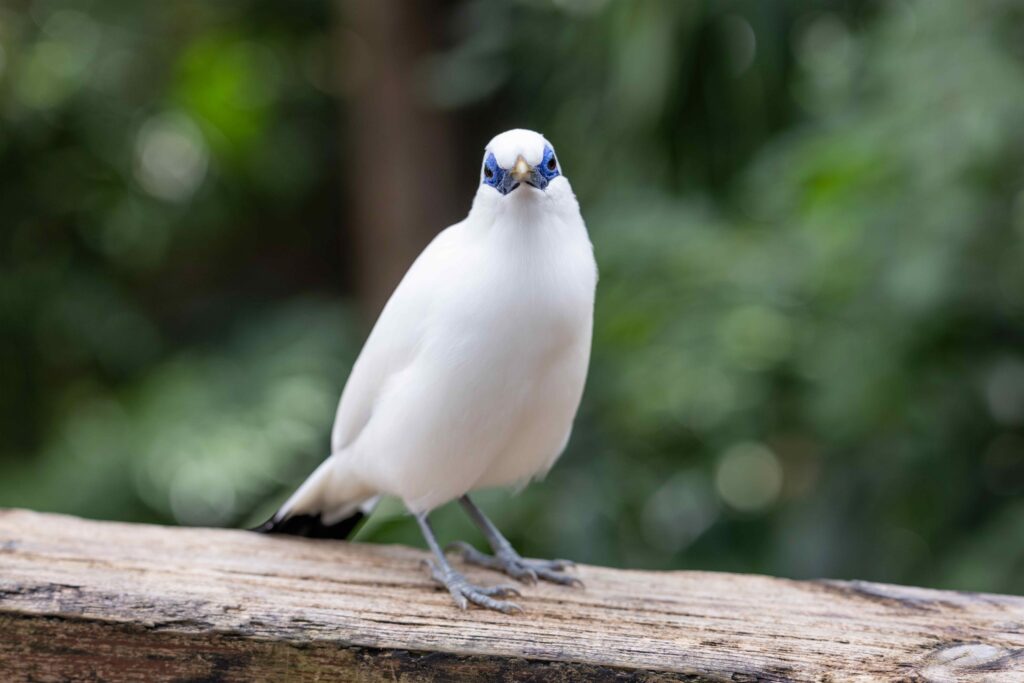
West Bali National Park has been working very hard to protect the Bali starling, however, there’s no doubt that there are severe problems with enforcement and that traditional Balinese village regulation isn’t working well to protect the birds.
The data on released birds suggests that a Bali starling born in captivity is more likely to end up in the cage bird trade than it is to become part of a healthy wild flock of Bali mynas.
The park authorities estimated that many of the captive-bred specimens simply disappeared on reintroduction thanks to poachers.
Nusa Penida Island And The Bali Mynah

The news was brighter at the other major breeding site for these birds and Nusa Penida island’s Begawan Foundation’s breeding program was very successful.
From a couple of pairs of birds in 1999, the foundation had raised over 100 birds in the following 10 years and worked to rewild the birds in the other Nusa islands too.
Unfortunately, the Bali Myna remains endangered in the Nusa Islands as well, and despite all of the efforts to establish an unofficial bird sanctuary on other islands, the results have been dismal.
The foundation undertook a survey in 2015, to find fewer than 15 birds in the wild across all the islands. Once again, village traditional law enforcement was so weak that there was no deterrent to poachers.
Other Places With A Bali Myna Breeding Program
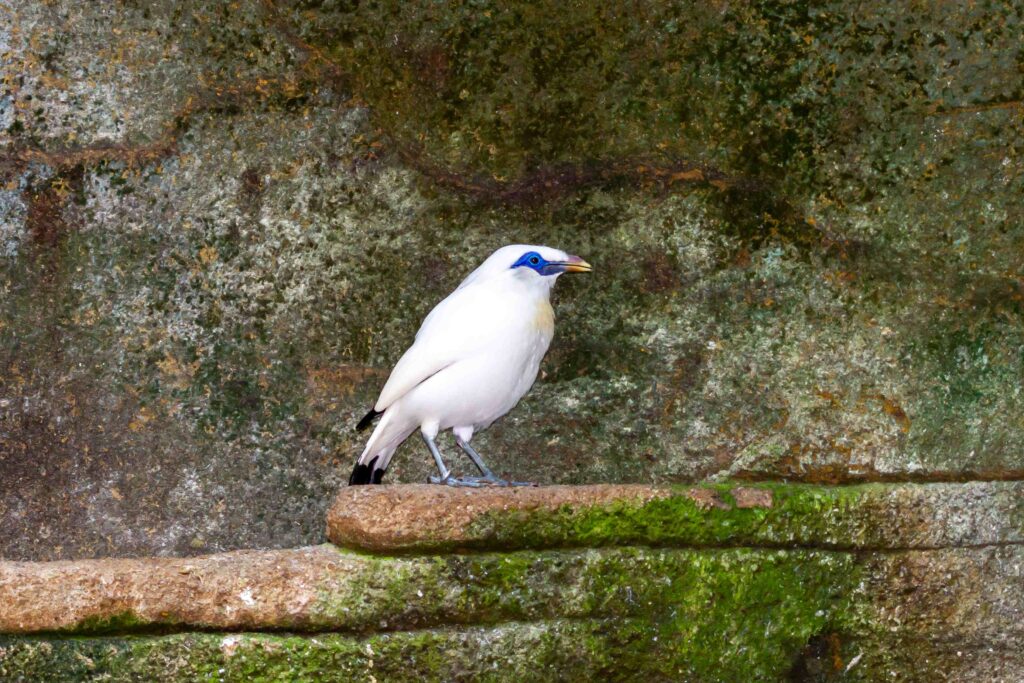
There is an official breeding program here in Bali and 12 breeders were invited to take 15 males and females each and raise them. These birds were often donated from overseas sources such as Jurong Bird Park which donated three male birds.
The conditions of the program were that, at least, 10% of healthy adult offspring had to be released into the wild and that the remaining birds could be sold by the breeders.
To make this work, each breeder had to place a cow with the government as collateral in case all the birds in their care died.
Sibang
After the attempt to grow the Bali Starling population on the Nusa Islands, the Begawan Foundation moved its breeding program to Ubud and worked with the official breeding program.
There were concerns about whether the birds could find a full and healthy diet in this area but they ringed the birds from the program, so they could examine birds and found they were healthy and that there’s a growing wild population in this area.
Dr. Jane Goodall, perhaps the most famous modern-day naturalist, even visited the community-based conservation program to release two Bali starlings into the wild here.
Melinggih Kelod Villag
This is very much a community program and it was founded in 2017. It’s not clear how the birds have fared in this program in the interim years.
However, the program is still operating which bodes well for the local birds held there.
FAQs
Will Captive Breeding Bali Starlings Save The Species?
Maybe. While the breeding programs are very good, once the birds are introduced into their natural habitat, they are often stolen by poachers for the illegal wildlife trade.
A breeding centre cannot protect the birds once they leave captivity.
How Many Bali Starlings Are Left In The World?
It’s estimated that there are around 50-100 starlings in the wild with, perhaps, another 1-2,000 in captive breeding programs.
Where Can I See A Bali Starling?
If you want a guaranteed sighting of a Bali starling, we’d recommend visiting the safari park here in Bali.
Why Is The Bali Mynah Endangered?
The illegal animal trade and general encroachment on the bird’s territory have had a real impact on the Bali starling population.
What Is The Rarest Bird In Bali?
The Bali myna is the rarest bird in Bali.
What Is The Incubation Period For Bali Starlings?
The eggs take 12-15 days to hatch and the females lay 2-3 eggs at a time.
Final Thoughts On The Bali Starlings
The Bali Starling is a beautiful and fascinating bird and while it is endangered, serious efforts are underway to try and restore the species on the island.
If you are lucky enough to see one during your time in Bali, feel free to take photos of it, but please don’t interfere with one.
Other animals in Bali:
Animals In Bali: Your Guide To All The Animals And Their Natural Environments On The Island
The Ultimate Bali Dolphins Guide: Everything You Need To Know To Meet Man’s Best Aquatic Friends
Monkeys In Bali: Where To Meet Them, How To Treat Them, & More

